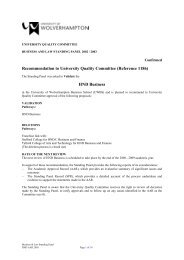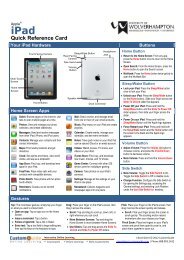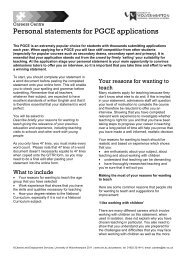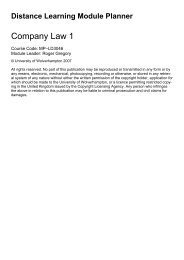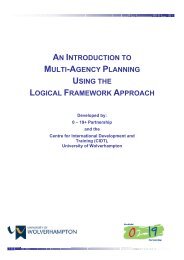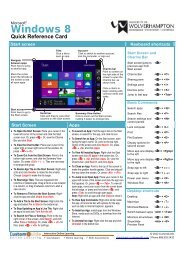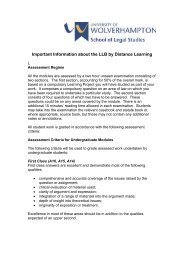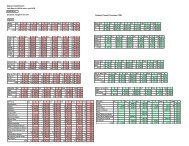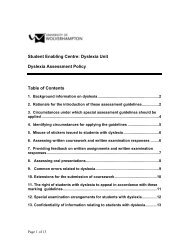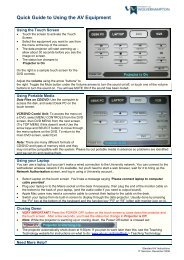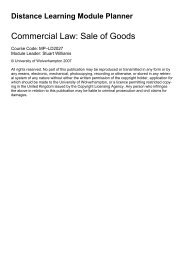This activity can be found in Pretty et al, (1995) - University of ...
This activity can be found in Pretty et al, (1995) - University of ...
This activity can be found in Pretty et al, (1995) - University of ...
- No tags were found...
You also want an ePaper? Increase the reach of your titles
YUMPU automatically turns print PDFs into web optimized ePapers that Google loves.
07 FS5How effective are your person<strong>al</strong> question<strong>in</strong>g strategies?ObjectiveParticipants will <strong>be</strong> aware <strong>of</strong> the importance <strong>of</strong> ‘high yield’ questions <strong>in</strong> facilitativediscussions.Time20 m<strong>in</strong>utesMateri<strong>al</strong>sHO 07 FS5.1 –Types <strong>of</strong> questionsTask & OrganisationInput for task: own ideas5.1 (3 m<strong>in</strong>utes – plenary) Ask participants to bra<strong>in</strong>storm the types <strong>of</strong> questions that arehigh yield. Introduce the terms used <strong>in</strong> (HO 07 FS5.1) <strong>in</strong> relation to the questiontypes they come up with. Discuss <strong>al</strong>so question types that should <strong>be</strong> avoided:lead<strong>in</strong>g, multiple questions and sensitive questions.5.2 (5 m<strong>in</strong>utes – groups <strong>of</strong> three) In each group, one participant should act as the‘<strong>in</strong>terviewer’, another as ‘<strong>in</strong>terviewee’ and the third as an observer. The<strong>in</strong>terviewee should choose a topic they would like to t<strong>al</strong>k about, for example aholiday, hobby, or work. The <strong>in</strong>terviewer than asks questions <strong>in</strong> order to f<strong>in</strong>d out asmuch as possible about the chosen topic <strong>in</strong> a 3 m<strong>in</strong>ute period. They should try toask as many ‘positive high yield’ questions as possible, but avoid,lead<strong>in</strong>g/multiple/sensitive questions. The observer records the num<strong>be</strong>r <strong>of</strong> eachtype <strong>of</strong> question asked and examples <strong>of</strong> both ‘good’ and ‘bad’.OutputIdeas on good questions.Feedback(5 m<strong>in</strong>utes – groups <strong>of</strong> three) When the exercise is f<strong>in</strong>ished, ask the participants <strong>in</strong> theirgroups to feed back to one another:♦ The <strong>in</strong>terviewer comment<strong>in</strong>g on how they felt it went.♦ The <strong>in</strong>terviewee comment<strong>in</strong>g from their perspective.♦ The observer provid<strong>in</strong>g objective feedback on the types <strong>of</strong> questions asked.(3 m<strong>in</strong>utes – plenary) Briefly discuss <strong>in</strong>terest<strong>in</strong>g po<strong>in</strong>ts aris<strong>in</strong>g from the exercise.Give participants a copy <strong>of</strong> HO 07 FS5.186 Jamaica All Age Schools Project: Facilitator Tra<strong>in</strong><strong>in</strong>g for School Based Resource Teachers



